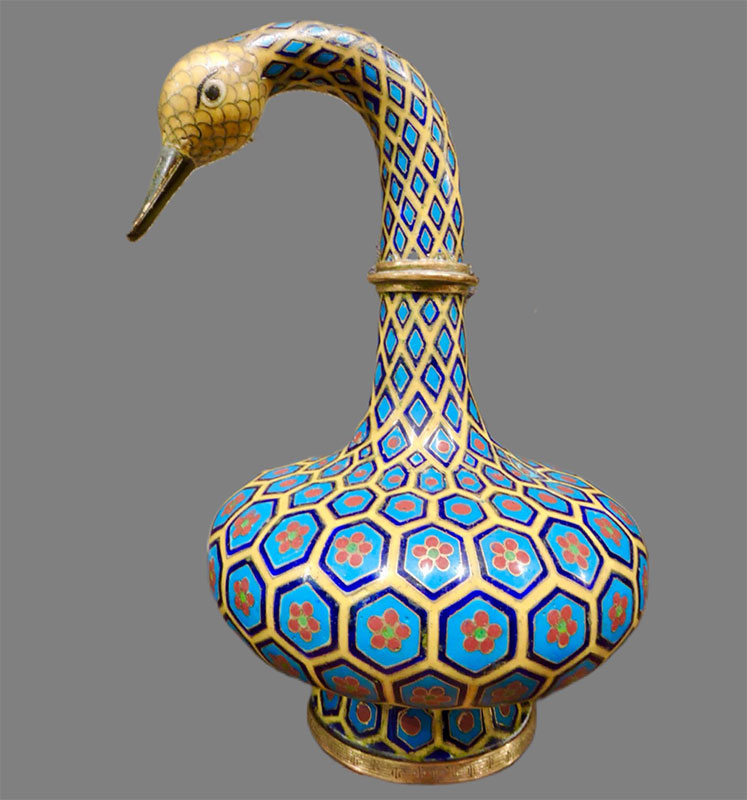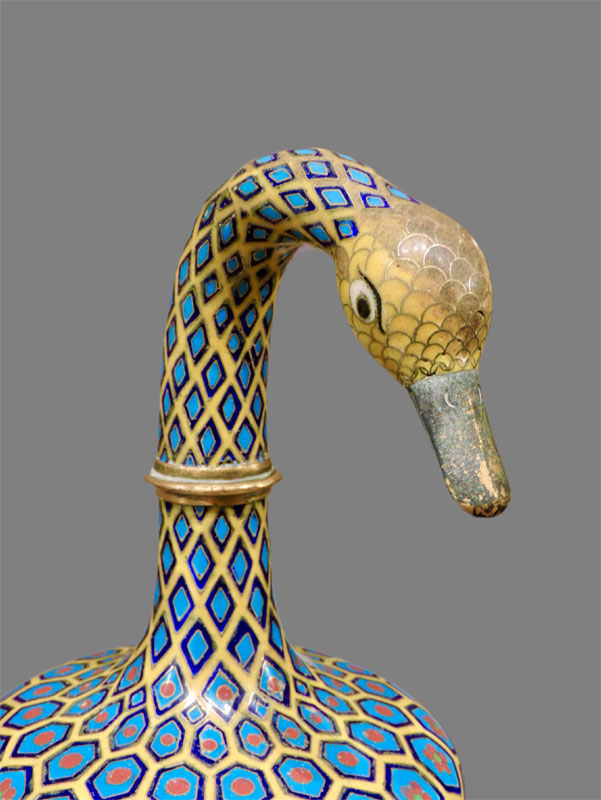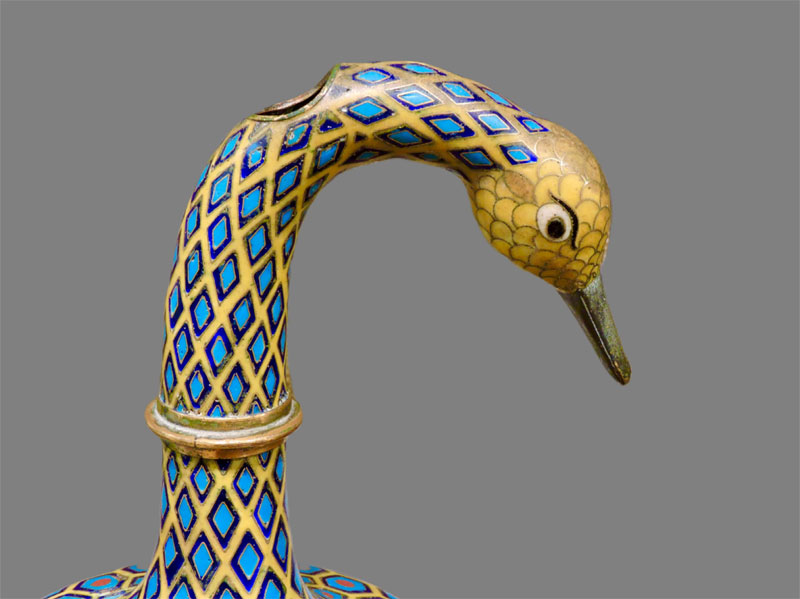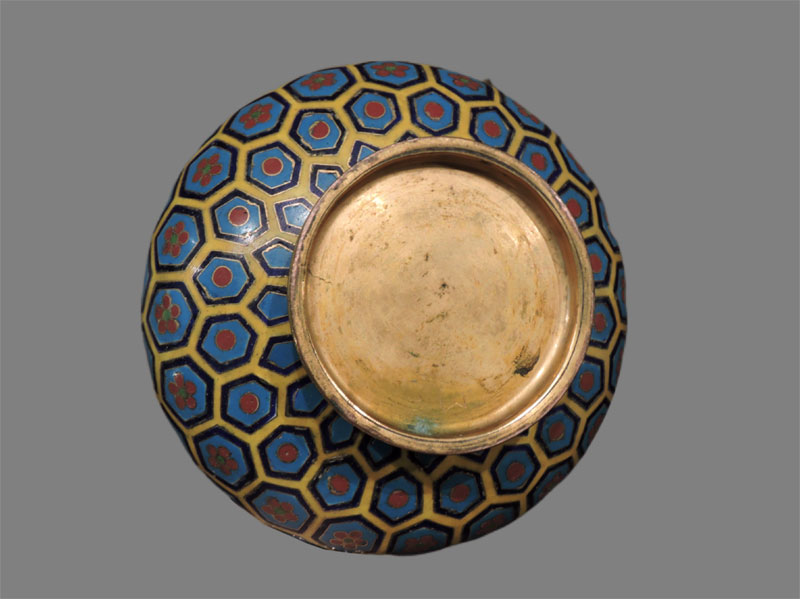Duck-head ewer in gilt bronze and cloisonné enamel
- Gilt bronze, cloisonné enamels
Description
In the shape of a duck, the body of this ewer rises on a small foot, decorated with an atypical background of blue and yellow enamels, small red and green flowers. The upper part depicts a duck’s head, eyes wide open, golden beak lowered. The delicately curved neckline features an opening for the liquid.
The yellow background enhances the rarity of this work. Its shape is inspired by Han Dynasty earthenware pots, and testifies to Emperor Qianlong’s attachment to archaic Chinese art. A model of this type can be seen at the Nelson Atkins Museum, Kansas City, USA, N. 31-136/6.
Inspired by archaic culture, this model gained popularity in the 18th century and was listed in the imperial catalog of Xiqing gujian bronzes, “Mirror of the Antiquities of the Western Pavilion”, as a hu pot.
See :
A similar ewer at the Musée des Arts Décoratifs de Paris, David David-Weil donation, 23.619, mentioned in Béatrice Quette, Cloisonné, Chinese enamels from the Yuan, Ming and Qing dynasty
N. 84, P. 266-267
Two similar ewers in Gunhild Gabbert Avitabile, Cloisonné und Champlevé Arbeiten, von 1400 bis 1900
N. 102, P. 180-181
Duck-head ewer in gilt bronze and cloisonné enamel
- Gilt bronze, cloisonné enamels
Discover more Cloisonné and enamel
Return to the collection
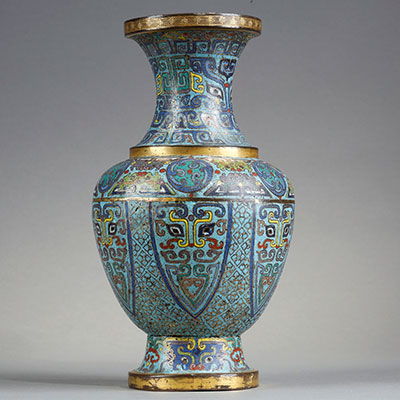

Imperial baluster vase in cloisonné enamels with archaistic decoration marked Jingtai
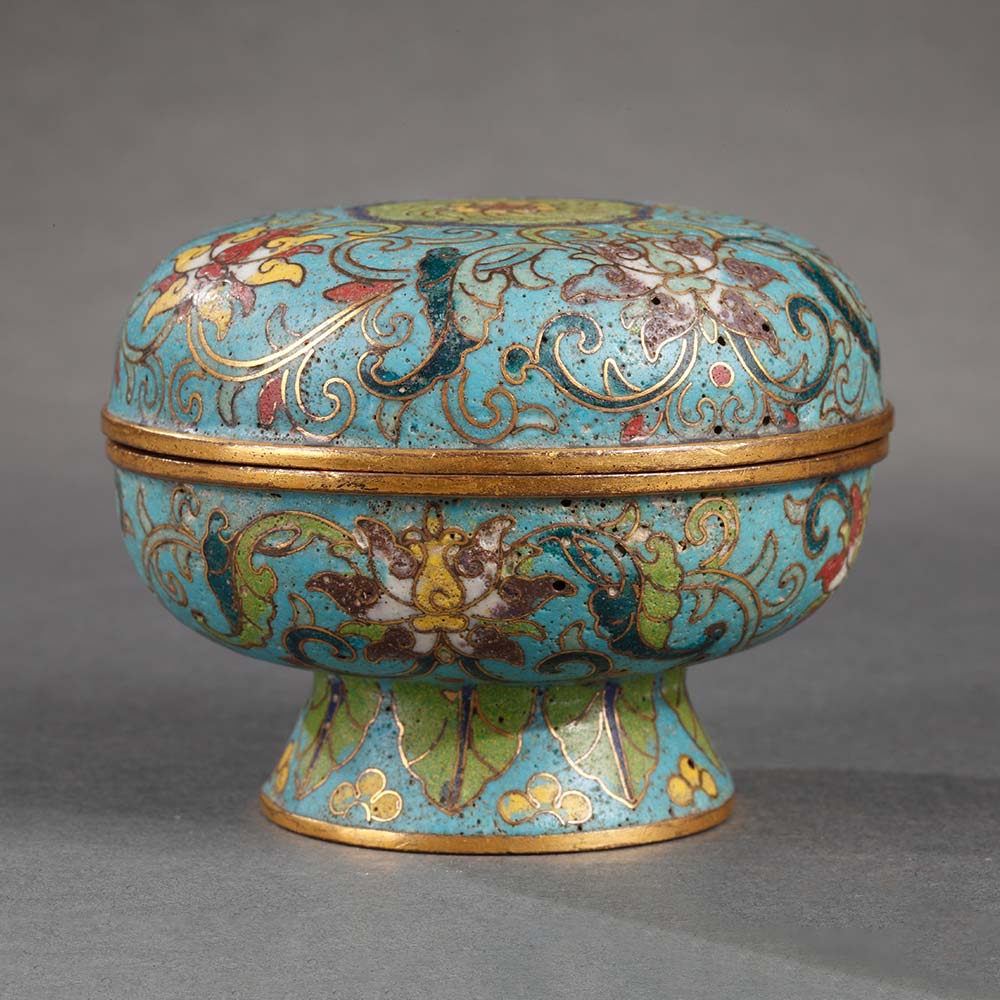

A box with a small pedestal decorated with lotus scrolls
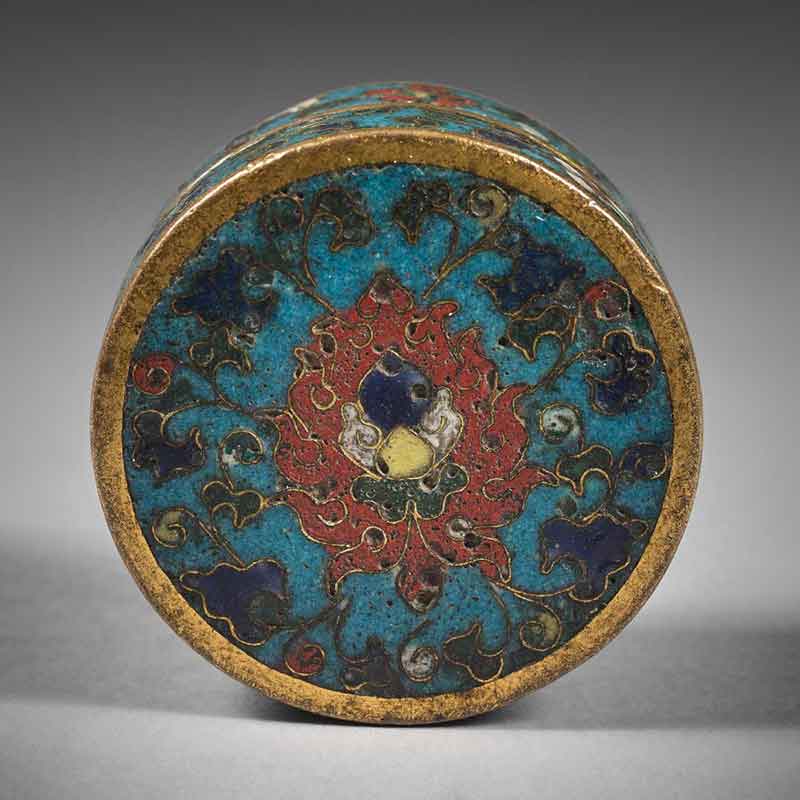
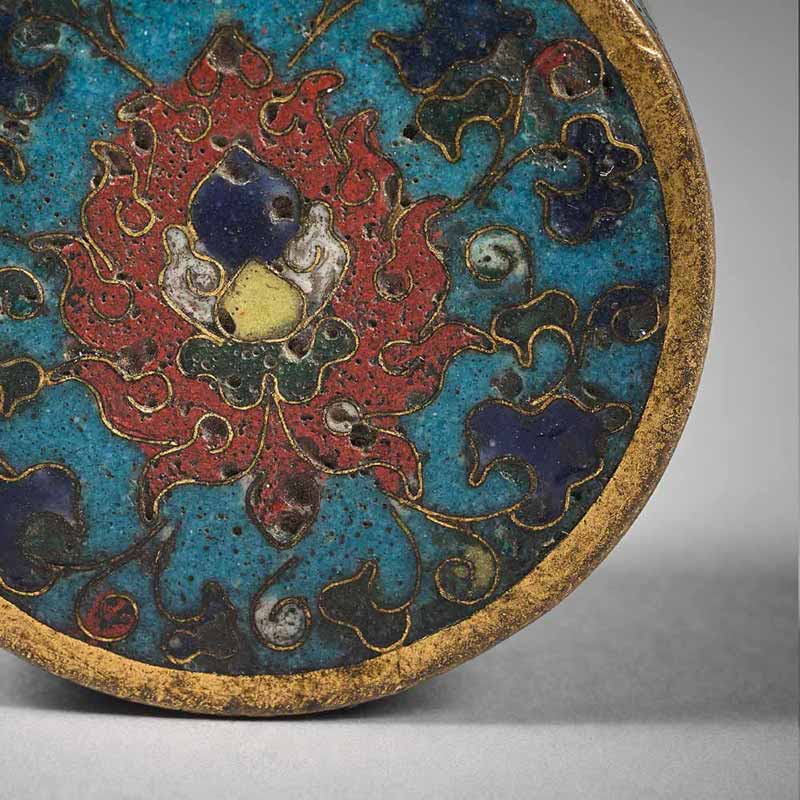
A rare small round box with lotus and floral scrolls on a turquoise ground
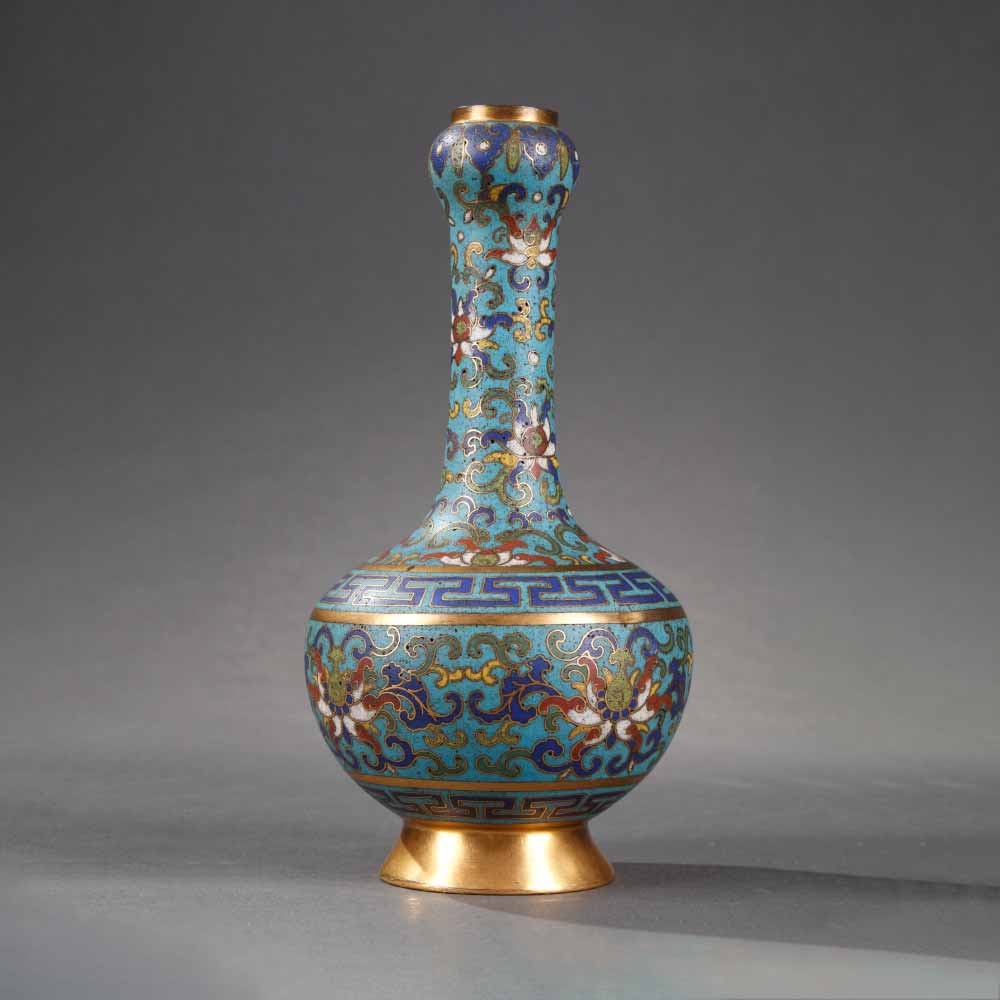
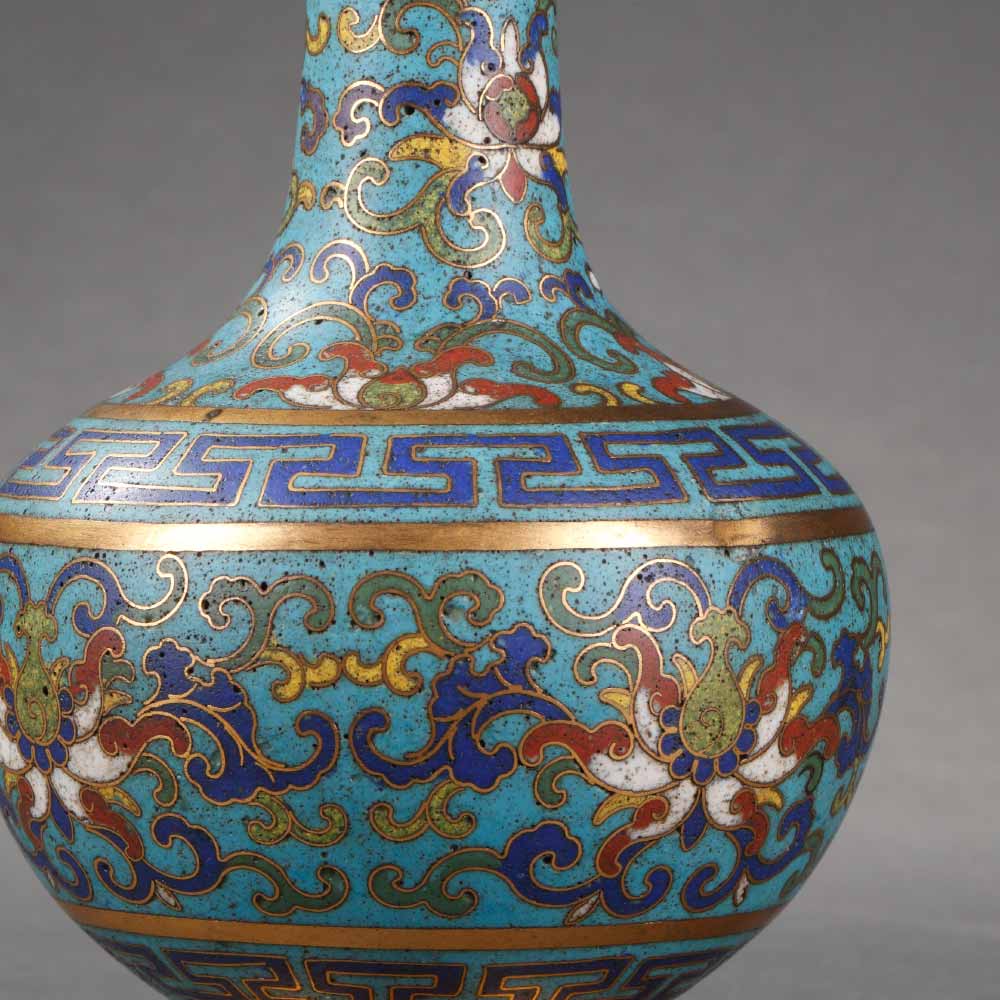
A suantou bottle vase decorated with floral scrolls










